Mercredi, 30 mars 2011
Traduction: [ Google | Babelfish ]
Catégories : [ TV/Cinéma ]
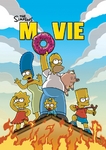
Wikipedia
Lake Springfield is terribly polluted, partly by Homer's fault. The EPA
decides to islate Springfield under a gigantic dome. The population soon
discover that Homer is the cause of it and try to lynch the family, but they
manage to escape and flee to Alaska. When Marge sees on TV that the EPA plans
to destroy the city, she decides to go back, but Homer refuses. Marge and her
family are caught and put back under the dome. Meanwhile, thanks to an inuit
shaman, Homer has an epiphany and belives he must save the town in order to
save himself. A bomb is lowered by the EPA into the dome through a small hole.
Homer causes it to drop into it, but manges to take it out and it eventually
explodes and destroys the dome.
[ Posté le 30 mars 2011 à 23:45 |
1
commentaire |
lien permanent ]
Adresse de trackback
https://weber.fi.eu.org/blog/TV/Cinema/the_simpsons_movie.trackback
Commentaires
Commentaire N° 1, Matthieu Weber (Finlande)
le 16 juillet 2020 à 14:38
Vendredi, 18 mars 2011
Catégories : [ Cuisine/Chocolats ]
Plamil Organic Dark
Chocolate, 87% : amer et fade. Sans intérêt.
Pacari
Los Rios, Équateur, 72% : structure pleine de bulles (défaut de fabrication ?), herbal, amer.
Pacari
Manabi, Équateur, 65% : frais, citron, un peu amer
Pacari
Esmeraldas, Équateur, 60% : doux, fleuri, miel.
[ Posté le 18 mars 2011 à 21:40 |
pas de
commentaire |
lien permanent ]
Adresse de trackback
https://weber.fi.eu.org/blog/Cuisine/Chocolats/chocolats_19.trackback
Commentaires
Aucun commentaire
Mercredi, 16 mars 2011
Traduction: [ Google | Babelfish ]
Catégories : [ Cuisine/Chocolats ]
Michel Daniel, Ouganda 80% : amer, me rappelle un peu la mer (?)
Michel Daniel, Kumabo (Tanzanie, Ghana, Sao Tomé) 80% : frais, amer
Michel Daniel, Sao Tomé 66% : très doux, bonbon ou biscuit, vanillé aussi,
vraiment très bon
Michel Daniel, Nouvelle Guinée 64,5% : fumé
Michel Daniel, Ghana 60,4% : doux, madeleine, fleuri
Thierry Mulhaupt, Chuao 68% : un peu acide, intense, houblon (?)
[ Posté le 16 mars 2011 à 22:10 |
pas de
commentaire |
lien permanent ]
Adresse de trackback
https://weber.fi.eu.org/blog/Cuisine/Chocolats/chocolats_18.trackback
Commentaires
Aucun commentaire
Catégories : [ Cuisine/Chocolats ]
Sate herkkutuote : ressemble bigrement au
Taloussuklaa de Fazer. Pas terrible.
Sate herkkutuote Kärmes, Ecuador 71% :
légèrement acide et astringent, un peu fleuri, un peu amer.
Sate herkkutuote Tumma suklaapatukka, Peru
64% : très doux, très bon.
[ Posté le 16 mars 2011 à 21:38 |
pas de
commentaire |
lien permanent ]
Adresse de trackback
https://weber.fi.eu.org/blog/Cuisine/Chocolats/chocolats_17.trackback
Commentaires
Aucun commentaire
Lundi, 14 mars 2011
Traduction: [ Google | Babelfish ]
Catégories : [ Bricolage/Arduino ]
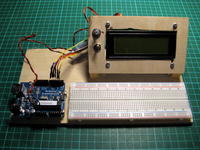
Here's a mini-workbench for Arduino prototyping, made of 6.5 mm plywood.
The Arduino board stands on whatever-they-are-called threaded thinggies you
use to screw the motherboard into the computer case without it touching the
metal. Arduino screw holes are 3.2 mm in diameter, so I had to drill them to
3.5 mm. It survived the treatment.
The breadboard had an adhesive back, so this one was easy.
The LCD has one potentiometer (top) for contrast and one switch for the LED
backlight (depending on the power source, backlight may consume too much
current, so it can be switched off if needed). The connectors at the end of
the ribbon cable are made from component legs and shrink tube.
The drawback is that now it takes much more space than it used too…
[ Posté le 14 mars 2011 à 22:29 |
pas de
commentaire |
lien permanent ]
Adresse de trackback
https://weber.fi.eu.org/blog/Bricolage/Arduino/arduino_workbench.trackback
Commentaires
Aucun commentaire
Vendredi, 11 mars 2011
Traduction: [ Google | Babelfish ]
Catégories : [ Bière ]
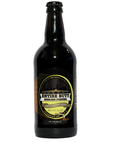
“Historically the term used to describe a Porter blended from a variety of
ales, Entire Butt uses 14 different malts and 3 hops to recreate this
forgotten style of Porter. The beer is… distinctly vinous. It has little hop
character as essentially flavour is derived from the malts: Pale marris
otter,lager, wheat, pale crystal, dark crystal, darck chocolate, pale
chocolate, black, roast barley, cara malt, torrified wheat, amber, brown and
malted oats.”
Noticeably bitter, not just another ale, but I can't identify any distincive
flavour. Contains barley, wheat and oats.
Salopian Brewery, Shrewsbury, Shropshire, England. 4.6% alcohol.
[ Posté le 11 mars 2011 à 20:31 |
pas de
commentaire |
lien permanent ]
Adresse de trackback
https://weber.fi.eu.org/blog/Biere/salopian_entire_butt.trackback
Commentaires
Aucun commentaire
Samedi, 5 mars 2011
Traduction: [ Google | Babelfish ]
Catégories : [ Informatique ]
« Alors tu vois, le processeur c'est comme le moteur de ta voiture. Et le
clavier c'est comme le volant… – Et le système d'exploitation c'est comme
l'essence alors ? – Euh… »
C'est n'importe quoi hein ? La comparaison avec la voiture ne vaut pas
tripette, parce que la voiture n'est pas un automate programmable (enfin, pas
encore). Voila une comparaison qui me paraît plus correcte (arrêtez-moi si je
me trompe): le restaurant. Dans un restaurant et dans le désordre, on
trouve:
- Le cuisinier : c'est lui qui fait (presque) tout le travail, comme le
processeur.
- Le cuisinier lit des recettes et les exécute : ce sont les programmes.
- Les recettes sont composées de gestes à effectuer qui indiquent au
cuisinier comme agir: ce sont les instructions.
- Les recettes indiquent comment transformer des ingrédients crus (viande,
légumes…) : ce sont les données fournies en entrée au programme.
- Ces ingrédients sont transformés en plats : ce sont les données fournies
en sortie par le programme.
- Les ingrédients et les plats doivent être posés quelque part à un moment
donné, par exemple sur des plans de travail : ces derniers servent de
mémoire centrale.
- Certains ingrédients crus doivent être stockés pendant un certain temps,
par exemple dans des réfrigérateurs : ce sont les mémoires de masse.
- Il existe un certain nombre d'opérations qui sont souvent répétées et que le
cuisinier a appris à effectuer lors de sa formation professionnelle (émincer,
fouetter, incorporer, ciseler…): ces instructions sont l'équivalent du
noyau du système d'exploitation.
- Il existe aussi des recettes de base qui sont souvent
répétées et qui entrent dans la composition des plats (roux, bouillon, pain…) :
elles forment l'interface de programmation qui sert de base à tous les
programmes. Certaines de ces recettes peuvent être commandées directement par le
client (le pain par exemple), et représentent les logiciels utilitaire (ou
commandes de base) fournies avec le système d'exploiatation.
- Le restaurant a des clients : ce sont les utilisateurs.
- Les client s'addressent à un serveur : ce dernier joue le rôle de
l'interface utilisateur.
- Le client peut choisir dans un menu ce qu'il désire manger, et donc les
recettes que le cuisinier va executer : ce menu est la liste des programmes
que l'utilisateur peut lancer, qui sont parfois regroupées dans un menu
(déroulant ou non).
- dans les restaurants, le cuisinier est rarement seul, il est aidé par le
boulanger, le patissier, le saucier: ce sont des coprocesseurs,
spécialisés dans l'exécution de certaines tâches.
Enfin, on peut considérer que les casseroles sont comme les registres du
processeur, elles servent de stockage temporaire pour les opérations
élémentaires.
Après, la comparaison a ses limites: on peut copier des données, mais on ne
copie pas un gateau au chocolat…
Aussi, il manque la possibilité au client de donner des ingrédients à la
cuisine, c'est à dire à l'utilisateur d'entrer des données dans l'ordinateur.
[ Posté le 5 mars 2011 à 22:00 |
2
commentaires |
lien permanent ]
Adresse de trackback
https://weber.fi.eu.org/blog/Informatique/comparaison_ordinateur.trackback
Commentaires
co-proc ?
Commentaire N° 1, tth (Toulouse, France)
le 5 mars 2011 à 12:04
Commentaire N° 2, Matthieu Weber (Jyväskylä, Finlande)
le 5 mars 2011 à 12:45
Traduction: [ Google | Babelfish ]
Catégories : [ Bière/Orkney ]
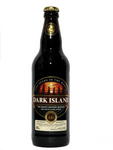
“On the nose, this dark beer offers bitter chocolate, figs, toffee and hints
of fruits. On the palate, coffee-and-chocolate flavours, followed by figs,
dates and dried fruits … and an aftertaste of fruits and hop bitterness.”
Chocolate and coffee, slightly acid too. Contains malted barley and malted
wheat.
Sinclair Breweries Ltd, The Orkney Brewery, Stromness, Orkney, Scotland. 4.6%
alcohol.
[ Posté le 5 mars 2011 à 21:53 |
pas de
commentaire |
lien permanent ]
Adresse de trackback
https://weber.fi.eu.org/blog/Biere/Orkney/orkney_dark_island.trackback
Commentaires
Aucun commentaire
Mardi, 1er mars 2011
Catégories : [ Râleries ]
In English below
Il m'est venu l'autre nuit l'idée suivante : si on transposait les
restrictions imposées sur la plupart des DVD dans la vie réelle, qu'est-ce que
ça donnerait?
Imaginons qu'on veuille acheter une copie d'une œuvre d'art. Au lieu de
recevoir l'objet attendu, on se retrouve avec:
- l'objet, mais enfermé dans une vitrine
- la vitrine est intégralement faite de glace sans tain, on ne peut donc voir
l'objet qui s'y trouve, sauf si celui-ci est éclairé depuis l'intérieur de la
vitrine,
- la vitrine est fermée à clef,
- la clef de la vitrine doit être achetée à part,
- cette clef est dans une boite scellée, sans ouverture apparente,
- il est interdit par la loi d'ouvrir la boite pour en sortir la
clef,
- lorsqu'on pose la boite sur la vitrine, la lumière s'allume, mais
seulement après que la boite nous ait bien fait comprendre qu'on est indigne
de poser nos yeux sur l'objet qui s'y trouve,
- on n'a pas le droit de ranger la boite n'importe où dans la maison, et la
partie de la maison où est rangée la boite ne nous appartient plus.
Imaginons maintenant qu'on acquierre une copie pirate de ladite œuvre d'art :
on reçoit une copie qui est éventuellement plus petite que la version qui
aurait été livrée dans la vitrine, et peut-être un peu moins bien polie, mais
au moins, on peut en disposer à sa guise.
Après ça, c'est vous qui voyez.
I got the following toughts the other night: how would it be if you would
transpose into real life the restrictions that are imposed on most DVD?
Let's imagine you wants to buy a copy of a work of art. Instead of getting the
expected object, you would have:
- The object, but enclosed in a display cabinet.
- The display cabinet would be entirely made of half-silvered mirrors, so that
you cannot see the object, except if it's lighted from the inside of the
cabinet.
- The display cabinet is locked.
- You need to buy separately the key to the display cabinet.
- This key is in a sealed box, with no visible opening.
- It is forbidden by law to open the box and extract the key.
- When you place the box on the top of the display cabinet, the light goes
on, but only after it has been made very clear that you are not worth watching
the object.
- You are not allowed to place the box wherever you want in your house, and
the place where the box is located is not your property anymore.
Let's now imagine that you acquire a pirate copy of said work of art: you get
a copy that is possibly smaller than the one that would have been delivered in
the display cabinet, and possibly a bit less well polished, but at least, you
can do with it whatever you please.
After that, it's your call.
[ Posté le 1er mars 2011 à 21:49 |
pas de
commentaire |
lien permanent ]
Adresse de trackback
https://weber.fi.eu.org/blog/Raleries/comparaison_DVD.trackback
Commentaires
Aucun commentaire
Traduction: [ Google | Babelfish ]
Catégories : [ Bière/Brewdog ]
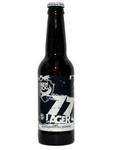
Flowery smell, quite bitter. Contains barley.
BrewDog Ltd., Fraserburgh, Scotland. 4.7% alcohol
[ Posté le 1er mars 2011 à 19:49 |
pas de
commentaire |
lien permanent ]
Adresse de trackback
https://weber.fi.eu.org/blog/Biere/Brewdog/brewdog_77_lager.trackback
Commentaires
Aucun commentaire






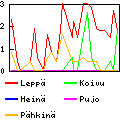





Watched it again.